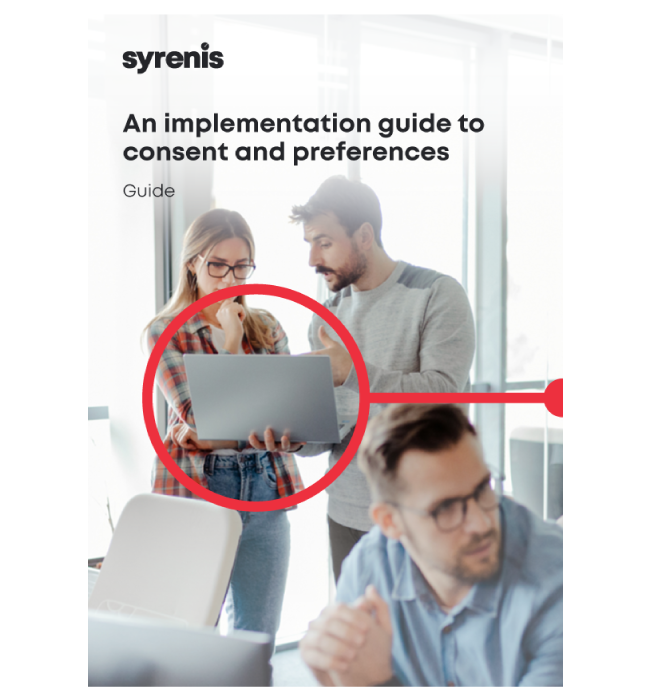Understanding consent matching and grouping strategies
Posted: June 23, 2025
Global organizations manage millions—sometimes billions—of customer records across diverse systems.
One of the most critical challenges in this landscape is accurately matching identities to ensure that consent and preference data is applied to the right individual.
This complexity not only causes complications in data accuracy and user experience, it also risks non-compliance with privacy legislation that states consent must be applied wherever a user interacts.
The technology required to enable matching and grouping functionality is advanced and not all consent management platforms deliver it in the same way.
We explore the terminology, why it’s important and lessons we’ve learn as a provider in real-world implementations.
- What is matching in consent management?
- What is grouping?
- Why matching & grouping matters
- Key lessons from real-world deployments
What is matching in consent management?
Matching refers to the process of identifying whether incoming data (like a consent submission) belongs to an existing data subject or requires the creation of a new one. It’s the first step in making sense of fragmented data across systems.
In high-volume environments, this process must be fast, accurate, and adaptable to various identifiers.
In Cassie, matching is rule-based and highly configurable. You can define multiple rule sets, each using different identifiers like:
- Customer ID
- Email address
- Phone number
- Profile ID
- Even non-personal identifiers like car registration or building ID
This flexibility means you can match known customers, anonymous users, or even IoT devices, all within the same platform.
You’re defining the indexes and the priority of the search – it’s like building your own identity resolution logic.
What is grouping?
Grouping takes matching a step further. It allows multiple profiles, for example a personal and a work account, to be linked to the same individual. This is essential when someone wants to opt in to newsletters at home but opt out at work.
Grouping enables:
- Multiple personas per data subject
- Segmented preferences across contexts
- Unified views of consent history
It’s especially powerful in use cases like open banking, where a single user might authorize different third parties to access different accounts, each with its own consent scope.
Why matching & grouping matters
For organizations with complex requirements and high-volume environments, the ability to support both known and unknown users, and to match across multiple identifiers, is often a top priority. Companies like this often need to:
- Avoid duplicate records
- Maintain a full audit trail
- Support real-time and batch processing
Matching and grouping aren’t just technical features, they’re strategic enablers. They allow organizations to:
- Respect user choices across channels
- Reduce compliance risk
- Build trust through transparency
- Scale consent management without chaos
If you’re building or evaluating a consent platform, don’t overlook the engine under the hood.
Key lessons from real-world deployments
Rule-based flexibility is essential
Enterprises use configurable matching rule sets that prioritize identifiers based on reliability, e.g., customer ID first, then email, then name. This layered approach reduces false matches and orphaned records.
Support for multiple identifiers
Systems must handle both known and unknown users. For example, a user might submit a marketing opt-out with only an email, while a customer record might include a full profile. Matching logic must accommodate both.
Performance at scale
Matching logic must be optimized for speed. Real-world deployments show that even with 20+ matching rules, systems can maintain sub-100ms response times with proper indexing and caching strategies.
Auditability and transparency
Every match decision should be traceable. Enterprises benefit from systems that log matching logic outcomes, enabling compliance and debugging.
Risk-based design
Matching rules should be designed with business risk in mind. For example, matching on name and zip code might be acceptable for marketing but not for financial data.
Pro tip: Think like a graph
Advanced systems treat identities as nodes in a graph, linking multiple identifiers to a single user. This allows for more intelligent matching and grouping, especially in omnichannel environments.
Final thoughts
As consent and privacy regulations evolve, enterprises must invest in matching systems that are not only accurate but also adaptable and scalable. The right approach can unlock better personalization, stronger compliance, and a more unified customer experience.

An implementation guide to consent and preferences
Use this document to help implement a Consent and Preference Management Platform (CPM) effectively by designing a comprehensive management framework.
Learn more
